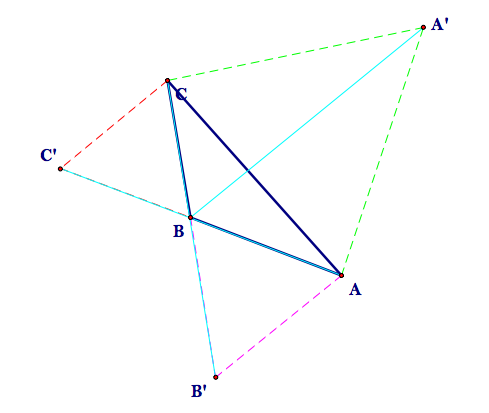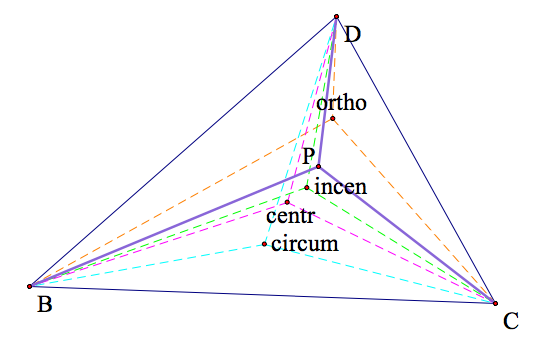
Assignment 6 - Fermat's Point
Faith Hoyt
We start off with a triangle (in the case of this proof we want to make sure that this triangle has no angles that are greater than 120 degrees).
Problem: Consider any triangle ABC. Find a construction for a point P such that the sum of the distances from P to each of the three vertices is a minimum.
To begin, I tried constructing the different centers of a triangle to see if those would give me the correct point that I was looking for. I noticed that the incenter seemed to be the closest, or have the least amount of distance to the vertices out of the centers of the triangles. However, I was not satisfied with this, so I put some random point in the triangle, connected it to the three vertices and measured those three lengths. I then moved this point around until I noticed that it was giving me a smaller distance than that of the incenter. Thus, I found that there must be another point that gives us our solution to our problem. Through some research on the internet, I found that this point is actually a famous point, the Fermat point.
As we can see in the sketch below, all of the "centers of the triangle" are found, but are not the point we are looking for (you can play with the centers if you would like to).

Now, we needed to figure out how we can find our point P to give us the minimal distance to each of the vertices. To do this, I started by constructing an equilateral triangle off each of the sides of the triangle. This actually ended up giving us three different quadrilaterals (in this case they are actually cyclic quadrilaterals). We can see one example in the bolded green lines.

Next, we want to draw in the diagonals of all of our quadrilaterals. We know that by the properties of quadrilaterals, and sense each of these quadrilaterals share two sides with another quadrilateral (i.e. quadrilateral A'CBA shares side BC and AB with quadrilateral C'BAC and shares sides BC and AC with quadrilateral B'ACB), that our three diagonals are going to be equal in length. Also, as stated before, we want our three interior angles to be 120 degrees for this to be our point. Thus, each of these angles will end up being bisected by our diagonals (which are actually simply extensions of our lines). Thus, we will get angles that measure 60 degrees inside.
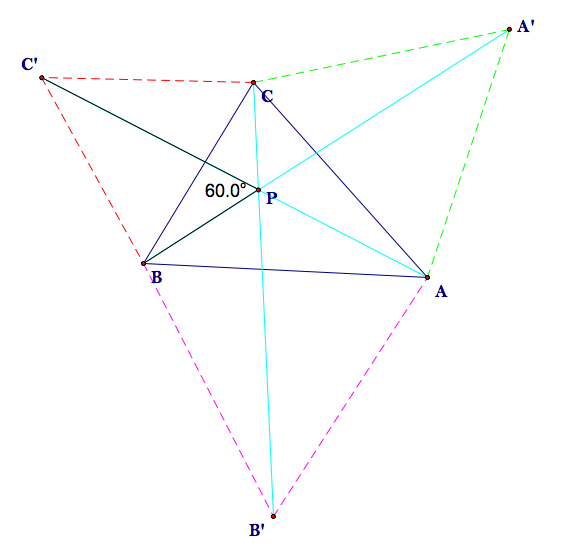
Now, we also can use the theory of inscribed angles and find that our three diagonals are concurrent at our point P and our three circumcircles are going to also be concurrent at point P. We know we want to use the circumcircles because we start with a triangle and ultimately end up with three triangles in which we want the circle to go through all three vertices. To move the circumcircle and investigate on your own, you can use my sketch.
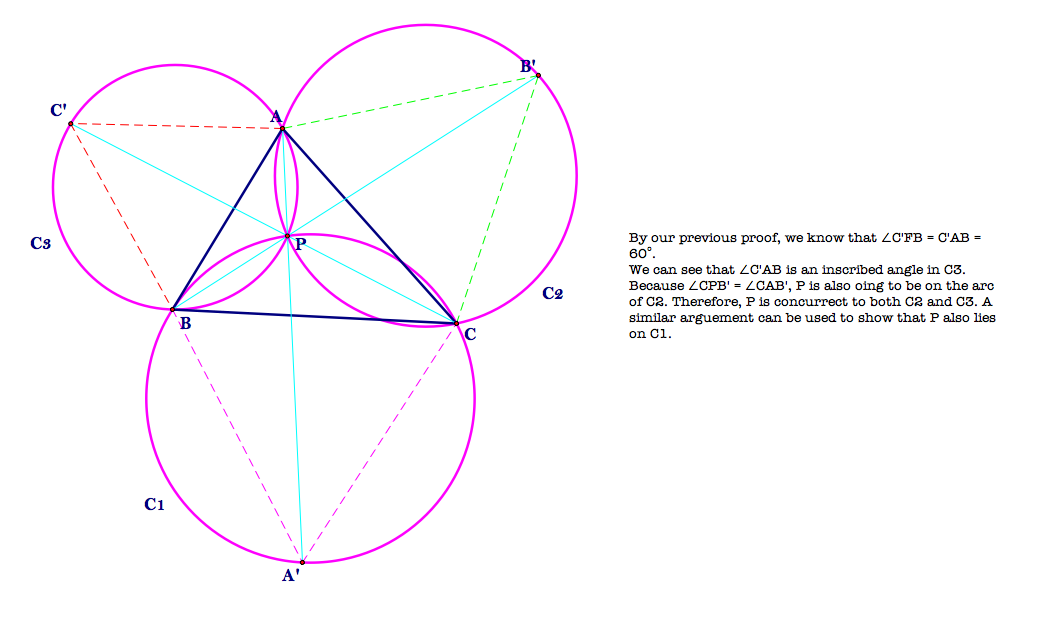
Now, we know how to find our point P, but how do we know that this in fact gives us the minimal distance to each of our three original vertices?
Let's prove that this is our point. From our constructions above we will use what we have found to be point P.
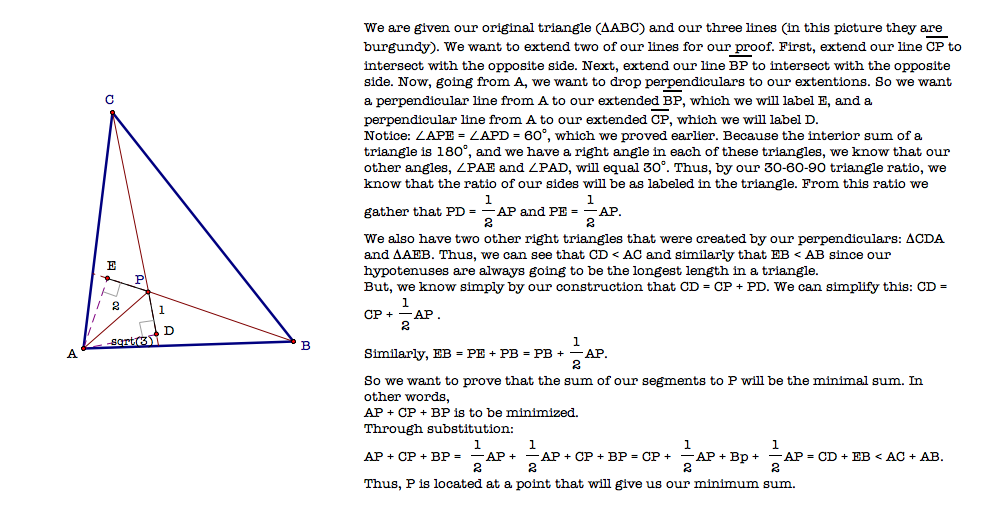
Therefore, we know that the Fermat Point is the point that gives us the minimal sum of distance from the three vertices.
If you recall, I mentioned before that we needed to be sure that our triangle had no angles greater than 120 degrees. I discovered in playing around with the file (which you can also do by clicking HERE), that when there is an angle that is 120 degrees, the fermat point lies on that angle. If there is an angle greater than 120 degrees, there is not a fermat point as there would be no specified point to give us that distance.
